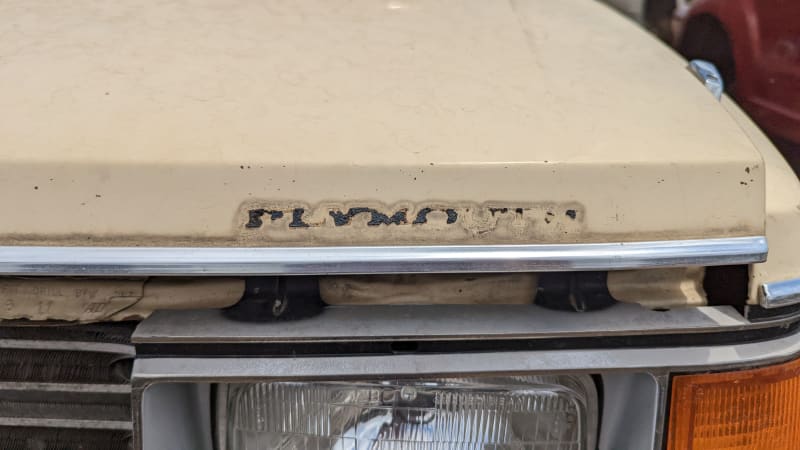Junkyard Gem of the Week: 1979 Plymouth Horizon (with the Woodgrain Package!)

While Ford and GM proved to have sufficiently deep pockets to design their own US-market subcompacts for the fuel-starved 1970s, Chrysler had to look to its overseas outposts to create such a car. Turning to Simca, which had become part of Chrysler Europe after Chrysler’s absorption of the Rootes Group, a promising hatchback concept was developed into both a European-market version and a significantly different American-market version. Today’s Junkyard Gem is an example of the latter type, found in a Denver-area self-service boneyard last summer.
The first of these cars came off the Belvidere Assembly line in Illinois as 1978 models (sadly, Stellantis just shuttered Belvidere in February). The Dodge-badged version was the Omni, while the Plymouth version was the Horizon; the generic term for this car is thus Omnirizon.

The Omnirizon was a great success for Chrysler, and many other vehicles were based on its platform. To name a few members of the extended Omnirizon family: the 1982-1987 Dodge Charger, the Dodge Rampage/Plymouth Scamp minitrucks, and even the Plymouth Turismo of Cocaine Factory fame. Astoundingly, production continued all the way through 1990, which meant that these thoroughly 1970s cars stuck around long enough to get airbags as standard equipment.

Just as was the case with the Mitsubishi-built Dodge and Plymouth Colts, there never were any significant differences—pricing or otherwise—between the Dodge Omni and Plymouth Horizon.

The Omnirizon got a fascinating assortment of engines during its first half-decade or so. For 1978 through 1980, it received the same 1.7-liter Volkswagen straight-four that went into US-market Rabbits, Sciroccos, Jettas and Audi 4000s. This one was rated at 77 horsepower and 90 pound-feet.

Chrysler began bolting in its homegrown 2.2-liter four-banger starting with the 1981 Omnirizons, with the hilariously quick Omni GLH and GLHS getting turbocharged versions a few years later. From the 1983 through 1986 model years, penny-pinching Americans could buy their base-model Omnirizons with 1.6-liter Peugeot-built Simca engines delivering 62 French horses to the front wheels.

This Horizon is absolutely loaded by the standards of late-1970s economy cars. The MSRP was just $4,278 (about $18,843 in 2023 dollars), but this automatic transmission would have added another $319 to the cost ($1,405 today). The base transmission for 1979 was a four-on-the-floor manual.

Once you’ve spent that much for clutch-free driving, why not spring for refrigerated air? The A/C in this car cost $507 ($2,233 now).

The 1979 Omnirizon came with an AM radio as base equipment, which was nowhere near a given in cheap cars of that era, but this one has the optional AM/FM stereo radio. The cost: 141 bucks, or 621 bucks after inflation.

Then we’ve got the bucket seats, sport steering wheel and everything else. By the time the dust settled, the out-the-door cost for this car must have been well over six grand. To put that into perspective, a new Cordoba listed at $6,306 that year. Gas lines and rationing scared car shoppers in 1979.

It has fender-mounted turn-signal indicators, just like a 1971 Chrysler New Yorker. These lights were included with the optional Light Package and Popular Equipment Group, priced at $46 and $279, respectively ($203 and $1,229 now).

The best thing about this car is the “Premium Woodgrain Package,” which cost $331 ($1,458 in 2023 dollars).

Of course that package included a “wood” shift knob.

It appears that this car’s usual parking place had the driver’s side facing to the south, which allowed the fierce Colorado sun to bleach the “wood” to near-invisibility.

This car was well-cared-for during its 43 years on the road, and it outlasted most of its Honda Civic and Datsun 210 competitors.

The Omnirizon got cheaper and cheaper (in real terms) as Chrysler made its production more efficient. By 1990, the list price for a new Dodge Omni was $6,995, which comes to about $16,518 in today’s money.
Front-wheel-drive was what you needed for those veterinary emergencies. Magazine ads of the era pitched this car as the Blizzard Wizard.



